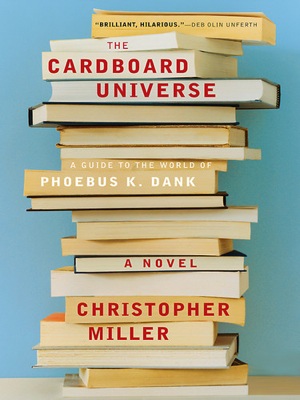(Generally spoiler free- intended for before or concurrent with your reading of the book.)
First, I don't claim to be an expert on Lolita. I read this book once, about ten years ago, and have only picked it up a few times since then to dip back into certain sections. I did a little more research before writing this and am working my way through The Annotated Lolita in addition to the Jeremy Irons audiobook to prepare for the discussion. This is just an attempt to identify, in advance, some things you might want to think about as you read Lolita.
Humbert Humbert is a classic example of the unreliable narrator. As you read the novel it's clear that you are being manipulated by the way he presents information and his constant dissembling and rationalizing, even though he does admit to some pretty unsavory things. The entire story (except the Forward) is relayed to us by Humbert which means that he controls and shapes the tone; he gets to "spin" the story, to use the modern parlance. The result is that the book manipulates you into sympathizing with this character who is, when taken objectively, a monster. His seductive tone, the remarkable elegance of his narrative voice creates a conflict within the reader of how to interpret what we are being told. This aspect of Lolita colors everything else to come. Only the Forward, the only part of the book that is not in Humbert's voice, allows Nabokov the opportunity to distance himself from this awful narrator and condemn the things he does, and even the Forward should be taken with some salt.
The novel is presented as being written by Humbert after the events took place. As a result there are hints, clues, and allusions in early chapters of characters and events that come later. This gives Lolita at least some aspects of a mystery story as the plot unravels. Weather you are reading this for the first time or rereading be aware of foreshadowing and alluding to future events, and also the use of coincidence to drive the plot.
There are lots of linguistic games and intricate wordplay going on. Nabokov fills the book (all his books, really) with hidden meanings and obscured references. For the most part I would say that "getting" all these references isn't really essential to the understanding the basic story, but they do provide another level of detail to think about. If you pick up a copy of The Annotated Lolita it will provide a lot more insight on these things, but it can also be very disruptive to the reading experience and I would not recommend it for a first time reader. It's probably better to simply read the novel on your own, attentively, and take from it what you get naturally. If something tugs at your brain or strikes you as a little odd it is probably intentional, and worth prodding for additional meaning (but not losing sleep over).
I will, however, provide a few tips on some of the larger allusions and references as a starting point for what to look for in order to gain a deeper appreciation of the work. There are several references to Edgar Allen Poe, and specifically to his poem Annabel Lee, not just attributing the name to Humbert's "initial girl-child" but several lines from the poem are also echoed in the novel, especially that first chapter. It should not be lost on the careful reader that Poe married his 13-year-old cousin in 1835, and this is one of several examples of pedophilic relationships in history and myth that Humbert provides as a loose justification for his condition in the early chapters.
There are also several instances of words and images the evoke elements of classic fairy tales. Examples of this can be found throughout, from the neologism "nymphet" to figurative descriptions of Humbert’s pursuit and Lolita’s innocence. Imagery related to butterflies comes up frequently as well, with many possible interpretations (Nabokov himself was a collector of them). Be aware of how ideas and concepts from psychology, especially Freudian psychology get mentioned. Nabokov was an outspoken critic of Freudian psychology, which is worth noting when considering Humbert's contempt for his own psychiatric examinations as well as his willingness to attribute childhood trauma as a cause of his fixation on young girls. These are just some of the things you find when you dig deeper into the text and background sources.
The novel is filled with coincidences, puns, allusions, alliteration, silly and unlikely names of people and places, implausibly convenient plot developments, foreign words and phrases and other linguistic flourishes. These all have a way of disrupting the reality of the narrative and unsettling the reader. Obviously it is a conscious choice made by the author- the whole point of such things is to call attention to them- but it is interesting to consider why Nabokov would want to do this as you read the novel. What effects does this have on someone trying to interpret and understand the story? What, if anything, does it say about our narrator?
Another thing to think about is that this novel was first published over 50 years ago, and where a lot of books and films that were considered shocking 50 years are downright tame by today’s standards Lolita still retains a lot of it's potency. Even on Pajiba, on the internet, ten years deep into the twenty-first century picking Lolita for the book club caused a few eyebrows to go up and a few comments to be made about the controversial subject matter. I guess it's a good thing in some ways that even as we grow more and more accepting of sex and sexuality, pedophilia still retains some of its taboo.
And yet, there is an argument to be made that even that is eroding in some ways. It certainly seems like sexualization of young girls is becoming more prevalent, at least of the 'look but don't touch' variety. Miley Cyrus and Dakota Fanning are only just outside of Humber Humbert's "9-14" criteria. Also, there is the popular usage of the term 'lolita'. It's usually applied, not so much to victims of sexual predators, but to precociously sexual young girls who experiment with sexual assertiveness or make a wanton appeal to that kind of attention. It takes on an unseemly 'asking for it' connotation that is not necessarily representative of the book's portrayal of the eponymous character.
When the relationship does turn sexual (spoiler: it turns sexual) how do you interpret Lolita's feelings given the unreliability of Humbert's account? At times she is portrayed as a willing and active participant, even a seducer of Humbert, but later details cast a different light on the effects this relationship has on her. Some of this could be attributed to the complexity and conflicting nature of her character (at first it's a game, but later the trauma and regret are felt). Then again, how much can we trust Humbert's version of Lolita's attitude toward him? Of course he is going to portray himself as desirable and her as willing. Where might the "truth" lie, and what difference would it make? Humbert is a predator, regardless. Does Lolita's attitude change in any way your interpretation of the story? Can there be, as Whoopi Goldberg put it, a distinction of rape but not "rape-rape"?
And finally, just take in the beautiful, lyrical writing. It's amazing. Several people already mentioned Humbert's opening paragraph on Lolita, which is one of my favorites, too. This isn't some Dan Brown hackery. Nabokov is acutely aware of the way his language feels and how we can experience it viscerally. He draws your attention to Lo-Li-Ta ("the tip of the tongue taking a trip down the palate to tap, at three, on the teeth"). Everything is carefully composed just so for a reason. The rhythm and cadence, the flow of words and sentences, the tactile sensation of reading it aloud (the lilting of "Lolita" and the double rumble of "Humbert Humbert" are meant to convey the essence of those characters), the significance of different ways to name something ("plain Lo, in the morning.... Dolly at school... Delores on the dotted line") or the ability to find poetry in a list of schoolchildren's names; it's not just an awareness of the etymology and meaning of words but also of their sensation and feeling, every word has been weighed and considered by Nabokov in creating this work. Regardless of how uncomfortable it may be to contemplate some of the things he says, how can you deny the beauty in the way he says them?
I hope you all enjoy it, and I look forward to the discussions to come.





